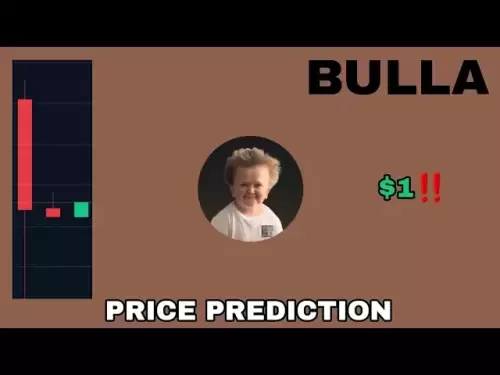-
 Bitcoin
Bitcoin $109,515.0810
2.97% -
 Ethereum
Ethereum $2,623.9634
3.45% -
 Tether USDt
Tether USDt $1.0005
-0.01% -
 XRP
XRP $2.3128
1.44% -
 BNB
BNB $663.9866
1.23% -
 Solana
Solana $158.1510
2.55% -
 USDC
USDC $0.9999
0.00% -
 Dogecoin
Dogecoin $0.1911
2.83% -
 TRON
TRON $0.2877
1.91% -
 Cardano
Cardano $0.6944
2.58% -
 Hyperliquid
Hyperliquid $38.2881
6.67% -
 Sui
Sui $3.4215
4.41% -
 Chainlink
Chainlink $14.2048
1.91% -
 Avalanche
Avalanche $21.6201
0.77% -
 UNUS SED LEO
UNUS SED LEO $9.2851
1.14% -
 Stellar
Stellar $0.2719
0.96% -
 Bitcoin Cash
Bitcoin Cash $423.6218
2.14% -
 Toncoin
Toncoin $3.3089
3.91% -
 Shiba Inu
Shiba Inu $0.0...01283
1.09% -
 Hedera
Hedera $0.1771
4.01% -
 Litecoin
Litecoin $89.5740
1.85% -
 Polkadot
Polkadot $4.1265
1.60% -
 Monero
Monero $331.8434
0.70% -
 Ethena USDe
Ethena USDe $1.0008
-0.02% -
 Bitget Token
Bitget Token $4.7078
0.91% -
 Dai
Dai $0.9999
-0.01% -
 Pepe
Pepe $0.0...01225
2.48% -
 Pi
Pi $0.6352
0.47% -
 Uniswap
Uniswap $6.7160
4.75% -
 Aave
Aave $272.7222
6.16%
How to use the chip distribution map to identify the main cost area and pressure support level?
The chip distribution map helps traders identify key price levels where tokens were bought, aiding in setting strategic entry and exit points for cryptocurrency trading.
Jun 09, 2025 at 11:00 pm
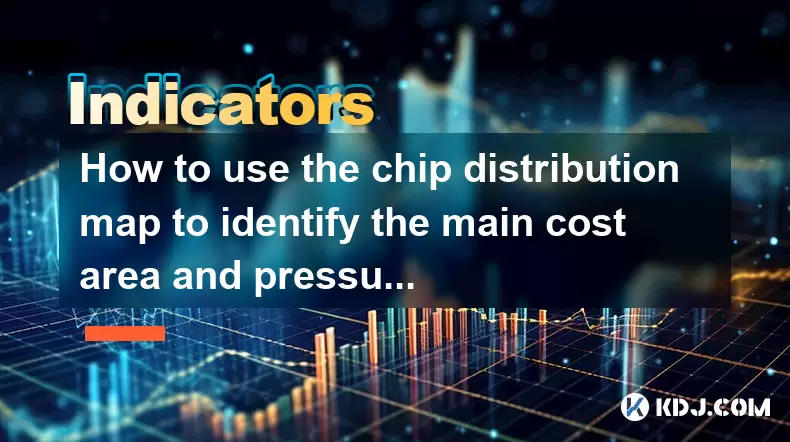
In the world of cryptocurrency trading, understanding the distribution of chips (or tokens) across various price levels is crucial for making informed decisions. The chip distribution map is a powerful tool that helps traders identify the main cost area and pressure support levels. By analyzing this map, traders can gain insights into where the majority of tokens were bought and where significant buying or selling pressure might occur. This article will delve into how to use the chip distribution map effectively to pinpoint these critical areas.
Understanding the Chip Distribution Map
The chip distribution map is a visual representation of the quantity of tokens held at different price levels. It shows how many tokens were purchased at each price point, providing a clear picture of the distribution of costs among investors. This map is essential for identifying the main cost area, which is the price level where the largest volume of tokens was bought, and the pressure support level, which indicates where significant buying or selling pressure might emerge.
Identifying the Main Cost Area
To identify the main cost area using the chip distribution map, follow these steps:
- Access the Chip Distribution Map: Begin by accessing the chip distribution map on your preferred trading platform. Most reputable platforms offer this tool in their analysis section.
- Analyze the Peaks: Look for the highest peak on the map. This peak represents the price level where the most tokens were purchased. This is your main cost area.
- Consider the Volume: Pay attention to the volume of tokens at this peak. A higher volume indicates stronger support or resistance at this price level.
- Confirm with Historical Data: Cross-reference the main cost area with historical price data to confirm its significance. If the price has historically bounced off this level, it reinforces its importance.
Identifying Pressure Support Levels
Pressure support levels are critical points where significant buying or selling pressure may occur. To identify these levels, follow these steps:
- Identify Multiple Peaks: Besides the main cost area, look for other significant peaks on the chip distribution map. These represent other levels where a considerable number of tokens were bought.
- Assess the Density: Evaluate the density of tokens at these peaks. Higher densities suggest stronger potential support or resistance.
- Combine with Market Trends: Consider current market trends and sentiment. If the market is bullish, lower pressure support levels might be more relevant, while in a bearish market, higher levels may come into play.
- Use Technical Indicators: Combine the chip distribution map with technical indicators like moving averages or RSI to validate the identified pressure support levels.
Applying the Chip Distribution Map in Trading
Once you have identified the main cost area and pressure support levels using the chip distribution map, you can apply this knowledge to your trading strategy:
- Entry and Exit Points: Use the main cost area as a reference for setting entry and exit points. If the price approaches this level, it might be a good time to enter or exit a position, depending on your analysis.
- Stop-Loss and Take-Profit Levels: Set stop-loss orders just below the main cost area to protect your investment. Similarly, set take-profit levels near identified pressure support levels to capitalize on potential price movements.
- Position Sizing: Adjust your position size based on the strength of the main cost area and pressure support levels. Stronger levels might warrant larger positions, while weaker levels suggest more conservative sizing.
Integrating with Other Analysis Tools
While the chip distribution map is a powerful tool on its own, integrating it with other analysis tools can enhance its effectiveness:
- Volume Profile: Combine the chip distribution map with a volume profile to get a more comprehensive view of where the most trading activity occurs. This can help confirm the main cost area and pressure support levels.
- Order Book Data: Analyze the order book to see where large buy or sell orders are placed. This can provide additional insights into potential pressure support levels.
- Sentiment Analysis: Use sentiment analysis tools to gauge market sentiment. Positive sentiment might reinforce the strength of identified support levels, while negative sentiment could indicate potential breakdowns.
Practical Example: Using the Chip Distribution Map
Let's walk through a practical example to illustrate how to use the chip distribution map to identify the main cost area and pressure support levels:
- Access the Map: Open the trading platform and navigate to the chip distribution map for the cryptocurrency you are analyzing, such as Bitcoin.
- Identify the Main Cost Area: On the map, you notice a significant peak at $30,000, indicating that a large volume of Bitcoin was bought at this price. This is your main cost area.
- Identify Pressure Support Levels: You observe another peak at $25,000, suggesting a secondary level where many tokens were bought. This could be a pressure support level.
- Analyze the Volume: The volume at $30,000 is significantly higher than at other levels, reinforcing its importance as the main cost area.
- Confirm with Historical Data: You check historical data and find that the price has bounced off $30,000 multiple times, confirming its role as a strong support level.
- Apply to Trading: Based on this analysis, you decide to set a buy order near $30,000, anticipating a bounce. You set a stop-loss just below $25,000, the identified pressure support level, to protect your investment.
Frequently Asked Questions
Q: Can the chip distribution map be used for all cryptocurrencies?
A: Yes, the chip distribution map can be used for any cryptocurrency that has sufficient trading volume and data. However, the accuracy and usefulness of the map may vary depending on the liquidity and market depth of the cryptocurrency.
Q: How often should I update my analysis using the chip distribution map?
A: It's recommended to update your analysis using the chip distribution map regularly, especially during significant price movements or when new market data becomes available. Daily or weekly updates can help you stay informed about changes in the main cost area and pressure support levels.
Q: Are there any limitations to using the chip distribution map?
A: Yes, the chip distribution map has some limitations. It relies on historical data and may not account for sudden market shifts or external factors that can influence price movements. Additionally, the accuracy of the map depends on the quality and completeness of the data provided by the trading platform.
Q: Can the chip distribution map be used in conjunction with other trading strategies?
A: Absolutely. The chip distribution map can be integrated with various trading strategies, such as trend following, mean reversion, or momentum trading. By combining the insights from the chip distribution map with other strategies, traders can enhance their decision-making process and improve their overall trading performance.
Disclaimer:info@kdj.com
The information provided is not trading advice. kdj.com does not assume any responsibility for any investments made based on the information provided in this article. Cryptocurrencies are highly volatile and it is highly recommended that you invest with caution after thorough research!
If you believe that the content used on this website infringes your copyright, please contact us immediately (info@kdj.com) and we will delete it promptly.
- Trump Stablecoin Backs Major Binance Investment
- 2025-06-10 04:40:12
- Sens. Adam Schiff and Elizabeth Warren ask federal ethics watchdog to investigate a dinner President Trump is set to attend
- 2025-06-10 04:40:12
- Top Cryptos to Buy for 2025 | Missed Injective? Qubetics Might Be Your Golden Ticket
- 2025-06-10 04:35:13
- Movement Labs has hired some of the founders Rushi
- 2025-06-10 04:35:13
- XRP Price Shows Strong Spot Premium Phase, Hints at Breakout Rally Toward $3.78
- 2025-06-10 04:30:14
- Stephen Colbert's 'Late Show' Channels Chappell Roan to Spoof Donald Trump Jr.'s New GOP Bigwigs-Only Club
- 2025-06-10 04:30:14
Related knowledge
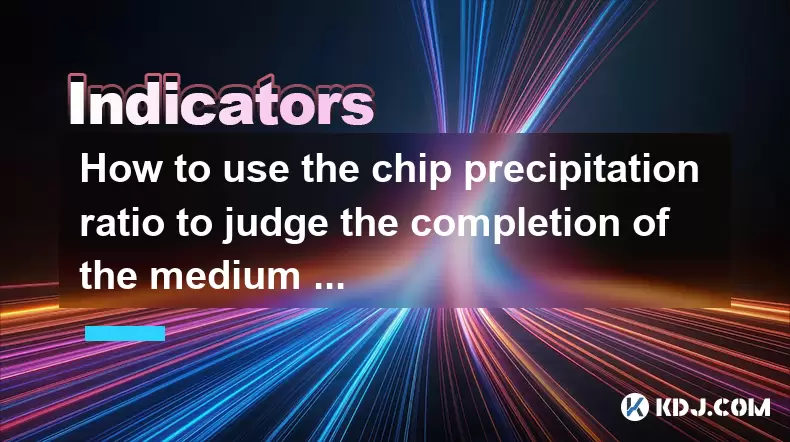
How to use the chip precipitation ratio to judge the completion of the medium and long-term bottom construction?
Jun 04,2025 at 03:36am
The chip precipitation ratio is a crucial metric used by investors to assess the accumulation of chips (or shares) at different price levels over time. This ratio helps in understanding the distribution of chips and can be a powerful tool for determining the completion of medium and long-term bottom construction in the cryptocurrency market. By analyzin...
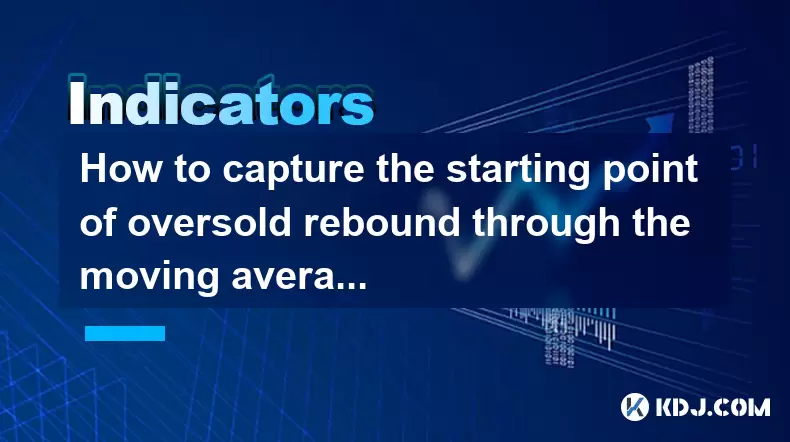
How to capture the starting point of oversold rebound through the moving average gravity reversal strategy?
Jun 04,2025 at 01:01pm
The moving average gravity reversal strategy is a sophisticated approach used by traders to identify potential entry points for buying cryptocurrencies when they are considered oversold. This strategy leverages the concept of moving averages to pinpoint moments when a cryptocurrency might be poised for a rebound. In this article, we will delve into the ...
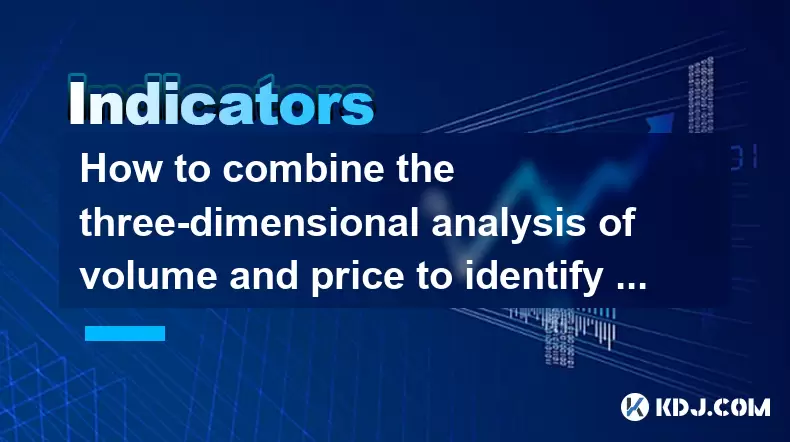
How to combine the three-dimensional analysis of volume and price to identify the golden buying point of breakthrough and retracement?
Jun 03,2025 at 11:42pm
In the dynamic world of cryptocurrencies, identifying the optimal buying points is crucial for maximizing profits and minimizing risks. One effective method to achieve this is by combining three-dimensional analysis of volume and price to pinpoint the golden buying points during breakouts and retracements. This article will delve into how to use this ap...
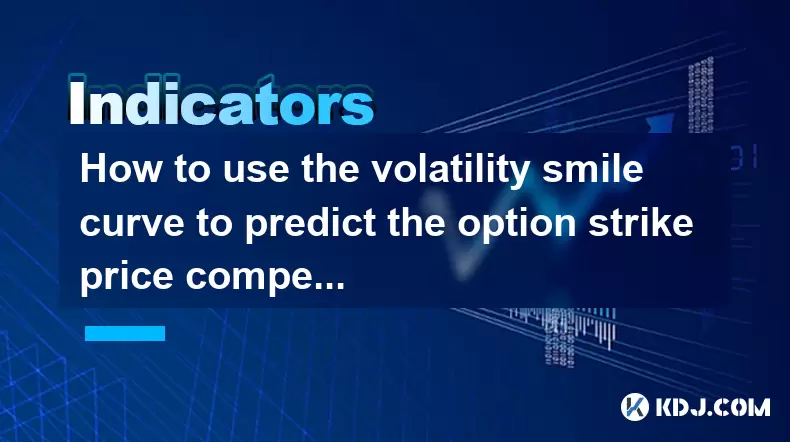
How to use the volatility smile curve to predict the option strike price competition area?
Jun 06,2025 at 01:01pm
The volatility smile curve is a graphical representation that shows the implied volatility of options across different strike prices for a given expiration date. It is called a 'smile' because the curve often takes the shape of a smile, with higher implied volatilities for options that are deep in-the-money or deep out-of-the-money, and lower implied vo...
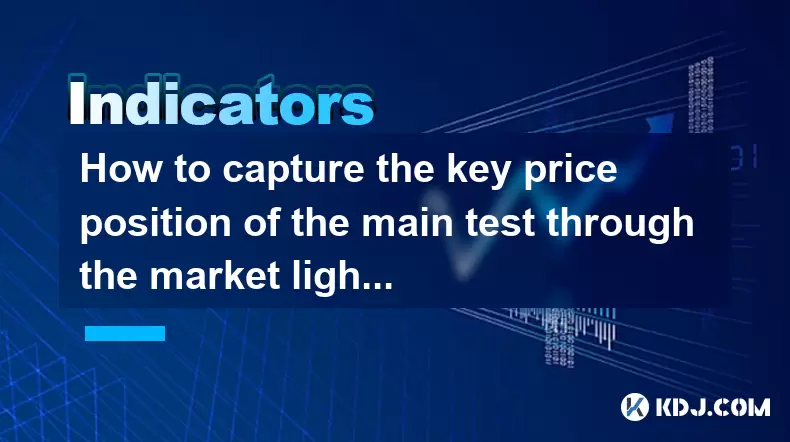
How to capture the key price position of the main test through the market lightning chart?
Jun 02,2025 at 06:07pm
Introduction to Market Lightning ChartThe market lightning chart is a powerful tool used by cryptocurrency traders to visualize price movements and identify key price positions. This chart type provides a detailed view of market activity, allowing traders to spot trends, reversals, and other significant price levels quickly. By understanding how to use ...
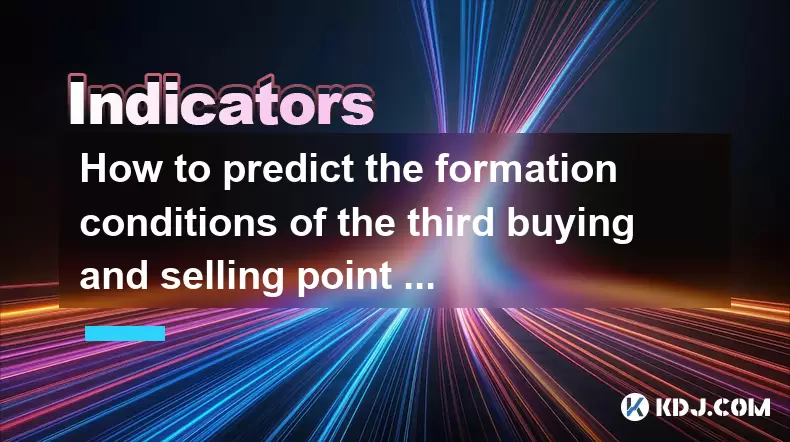
How to predict the formation conditions of the third buying and selling point in combination with the extension of the central axis of the Chaos Theory?
Jun 08,2025 at 12:42am
The concept of predicting the formation conditions of the third buying and selling point in the cryptocurrency market by combining the extension of the central axis of the Chaos Theory is an advanced analytical technique. This method involves understanding the chaotic nature of price movements and using it to identify key moments for trading. In this ar...

How to use the chip precipitation ratio to judge the completion of the medium and long-term bottom construction?
Jun 04,2025 at 03:36am
The chip precipitation ratio is a crucial metric used by investors to assess the accumulation of chips (or shares) at different price levels over time. This ratio helps in understanding the distribution of chips and can be a powerful tool for determining the completion of medium and long-term bottom construction in the cryptocurrency market. By analyzin...

How to capture the starting point of oversold rebound through the moving average gravity reversal strategy?
Jun 04,2025 at 01:01pm
The moving average gravity reversal strategy is a sophisticated approach used by traders to identify potential entry points for buying cryptocurrencies when they are considered oversold. This strategy leverages the concept of moving averages to pinpoint moments when a cryptocurrency might be poised for a rebound. In this article, we will delve into the ...

How to combine the three-dimensional analysis of volume and price to identify the golden buying point of breakthrough and retracement?
Jun 03,2025 at 11:42pm
In the dynamic world of cryptocurrencies, identifying the optimal buying points is crucial for maximizing profits and minimizing risks. One effective method to achieve this is by combining three-dimensional analysis of volume and price to pinpoint the golden buying points during breakouts and retracements. This article will delve into how to use this ap...

How to use the volatility smile curve to predict the option strike price competition area?
Jun 06,2025 at 01:01pm
The volatility smile curve is a graphical representation that shows the implied volatility of options across different strike prices for a given expiration date. It is called a 'smile' because the curve often takes the shape of a smile, with higher implied volatilities for options that are deep in-the-money or deep out-of-the-money, and lower implied vo...

How to capture the key price position of the main test through the market lightning chart?
Jun 02,2025 at 06:07pm
Introduction to Market Lightning ChartThe market lightning chart is a powerful tool used by cryptocurrency traders to visualize price movements and identify key price positions. This chart type provides a detailed view of market activity, allowing traders to spot trends, reversals, and other significant price levels quickly. By understanding how to use ...

How to predict the formation conditions of the third buying and selling point in combination with the extension of the central axis of the Chaos Theory?
Jun 08,2025 at 12:42am
The concept of predicting the formation conditions of the third buying and selling point in the cryptocurrency market by combining the extension of the central axis of the Chaos Theory is an advanced analytical technique. This method involves understanding the chaotic nature of price movements and using it to identify key moments for trading. In this ar...
See all articles


























